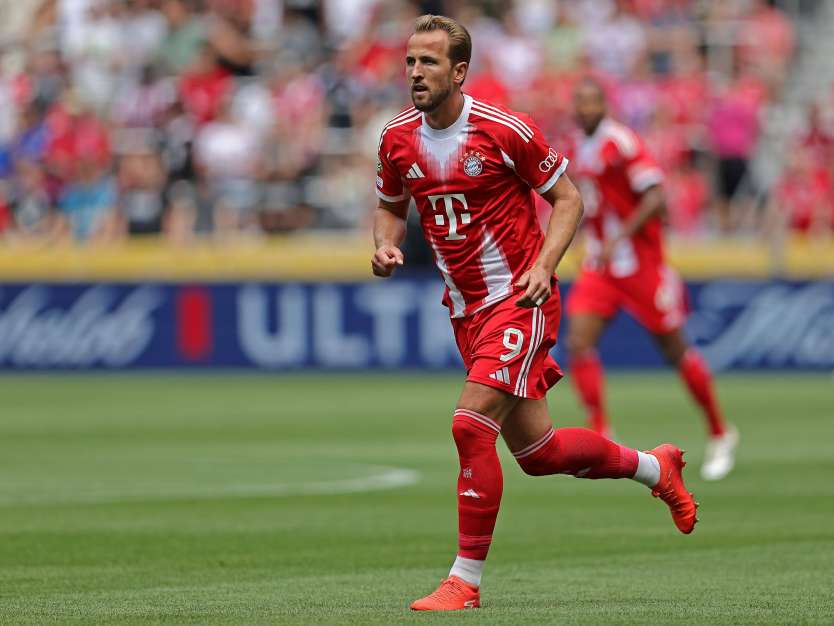
Franz Beckenbauer Supercup: Heritage and Reach
Published on
by Frederik Festner
Tradition Meets a New Era
When FC Bayern Munich faces VfB Stuttgart on August 16, 2025, it’s not just the first trophy of the new season at stake — it’s the beginning of a new chapter in a long-standing football tradition. The Franz Beckenbauer Supercup, as the competition will officially be called from 2025 onwards, is by no means a new invention. Instead, it represents the continuation of a format that has shaped German football for decades.
In this Insight:
From 1987 to Today: A Competition in Evolution
The Supercup was first held in 1987 as the DFB-Supercup, a traditional curtain-raiser to the season between the Bundesliga champions and the DFB Cup winners. Between 1992 and 1996, it was also branded the Panasonic Supercup, named after one of its sponsors.
In 1991, reflecting the reunification of Germany, the format even featured semi-finals between the West German league and cup winners and their East German counterparts – a truly unique moment in German football history.
After 1996, the competition was paused in favor of the DFL-Ligapokal, a pre-season tournament held until 2007. The Supercup made its return in 2010 under the umbrella of the DFL and has since become a permanent fixture in the German football calendar – prestigious, widely watched, and symbolically significant.
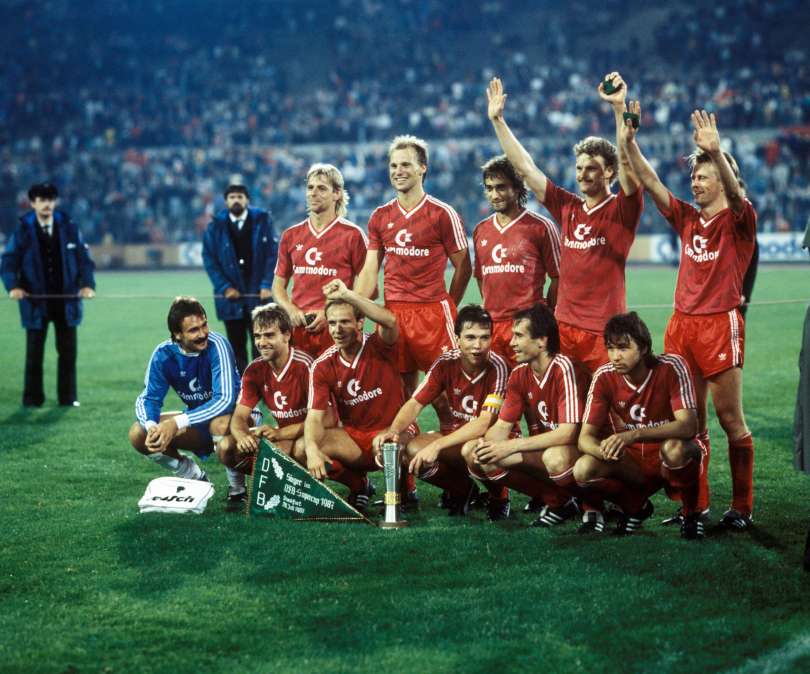
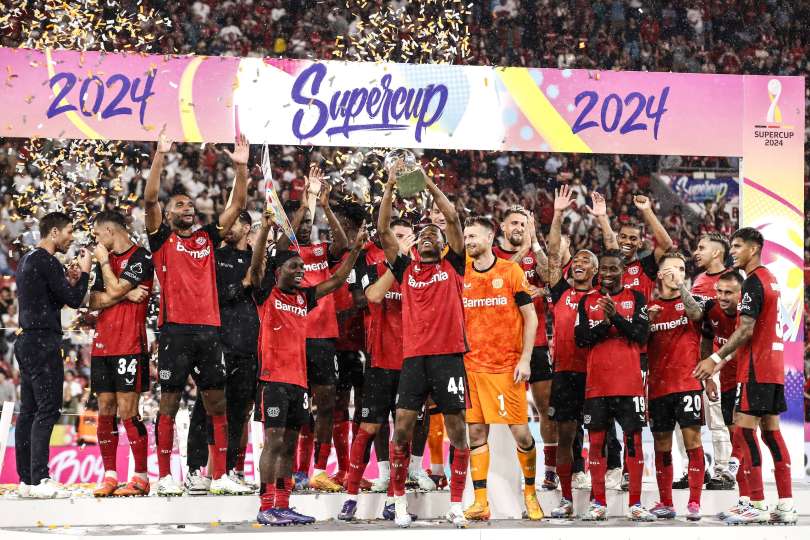
A New Name for a Football Icon
From 2025 onwards, the Supercup will carry a new name: the Franz Beckenbauer Supercup, honoring one of football’s most legendary figures. As a world champion player, coach, and visionary, Franz Beckenbauer’s legacy is deeply intertwined with the success and identity of German football. Naming this title match after “Der Kaiser” is a powerful gesture — a tribute to a man who shaped generations
Today’s format has evolved in several ways. When a team wins both the league and the cup (the “double”), the Bundesliga runner-up now competes in the Supercup. If the match ends in a draw after 90 minutes, there’s no extra time — the game goes directly to a penalty shootout. Since 2011, the game is usually hosted at the home stadium of the cup winner or league runner-up, though this is not fixed by regulation.
Historically, the Bundesliga champion has lifted the trophy 15 times, while their opponent — the cup winner or runner-up — has won 9 times, underlining just how competitive and unpredictable the match can be.
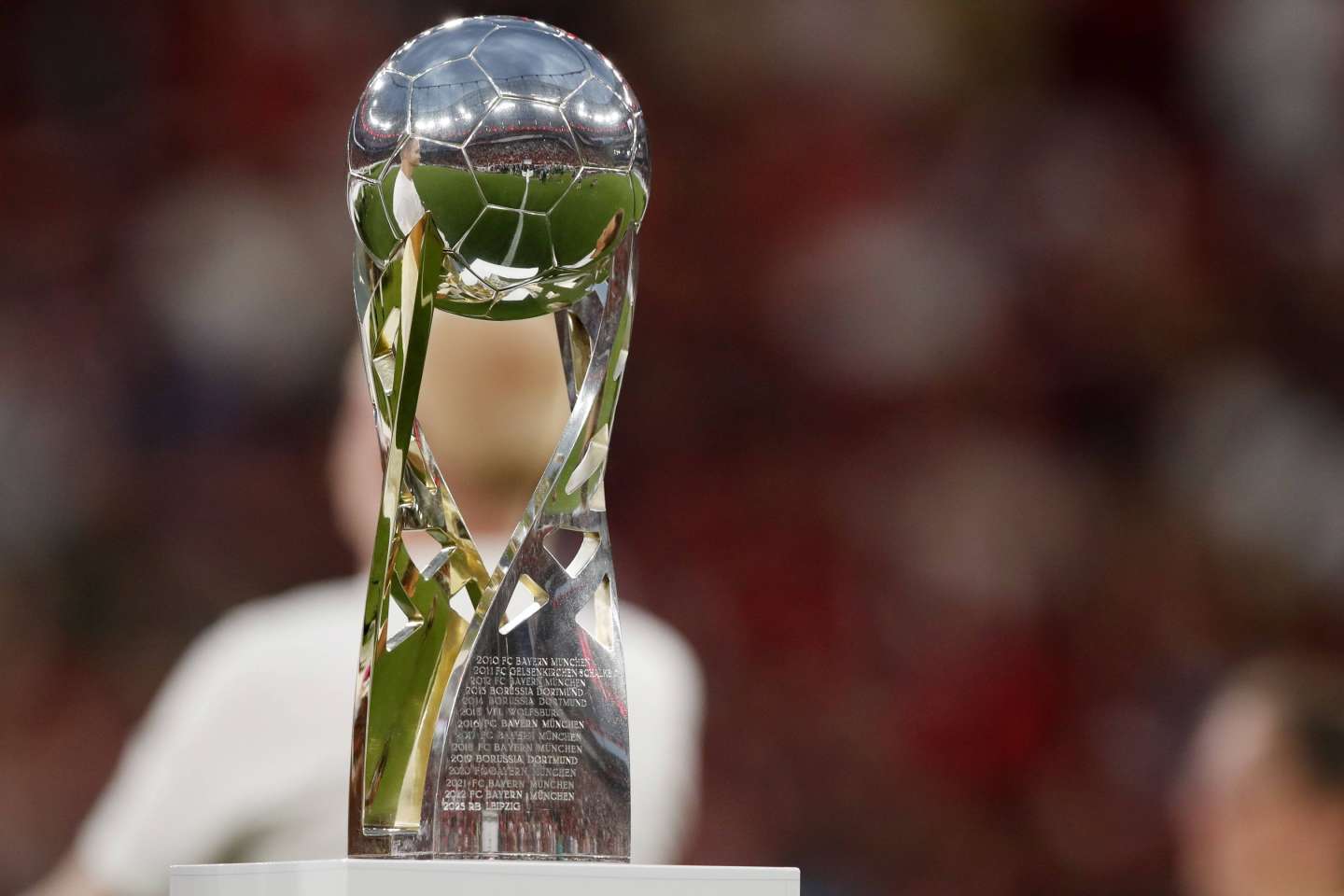
Join as a partner
Become a partner of the Franz Beckenbauer Supercup – gain nationwide visibility and showcase your brand at the first match of the season!
Read moreWhy the Franz Beckenbauer Supercup Is a Powerful Platform for Partners
Reach & Visibility
The Supercup attracts a vast audience — both nationally and internationally. As a brand partner, you can significantly increase your reach and boost brand visibility across key demographics.
Image & Perception
Sports sponsorships are proven to enhance brand perception. At the Supercup, sponsors benefit from elevated levels of trust, relevance, and likability among fans.
Employer Branding
Sponsorships in sport also support talent recruitment and employee engagement. They create emotional connections and strengthen your position as an attractive employer.
Networking
The Supercup brings together decision-makers from across sport, business, and media. It’s a prime setting for networking and initiating new business partnerships.
Direct Customer Engagement
Engage directly with fans and potential customers via activations at the stadium. From product sampling to interactive experiences, the Supercup offers a live platform for brands to connect and drive conversion.
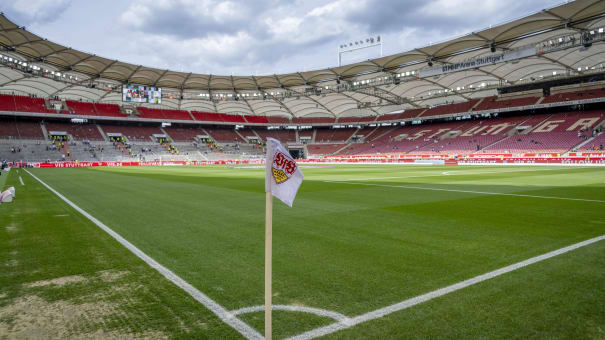
2025: FC Bayern vs. VfB Stuttgart – Season Opener with Impact
The 2025 match-up promises high-quality football and big storylines. Bayern clinched the league title after a dominant second half of the season, while Stuttgart celebrated a remarkable DFB Cup victory. Two ambitious teams. One trophy. Millions watching.
In 2024, over 2.5 million viewers tuned in to the broadcast – and 2025 is set to draw even more attention. The Franz Beckenbauer Supercup is not just a football match – it’s a cultural event and a powerful platform.
Sponsorship is the financial support for a sporting event, organisation or athlete by an outside body, for the mutual benefit of both parties. At the professional level this tends to be by companies, to raise the profile of their brand by associating it with the athlete.
The company aims to generate brand awareness and customer recognition, whilst the event, organisation or athlete receives a boost in funding.
A popular example is a brand logo printed on a team shirt. Visibility is guaranteed, even more so in the modern world with social media and online highlights.
In the land of media and marketing rights today, there is no cookie-cut solution for brands, and a simple logo placement will not provide the sufficient return on investment (ROI) for sponsorship, nor does it give their target audience the “why?” - the reason to spend their money and engage with the product.
Companies investing in sports sponsorship need to look at the bigger picture to engage with fans and not rely on just one piece of inventory.
A brand partnership is a mutually beneficial agreement between two or more businesses. All parties agree to help one another by promoting and sponsoring each other or creating content together.
Brand partnerships aim to increase brand recognition and ultimately boost sales and customer loyalty.
In sports, co-branding exists, where two or more companies jointly promote their brands, services, and products through cross-marketing efforts.
This can include anything from social media posts, advertisements, and commercials to events and appearances by high-profile athletes and celebrities.
Marketing is crucial in sports for several reasons. Firstly, it enhances the visibility and popularity of sports teams, athletes, and events, attracting a broader audience and increasing fan engagement. Effective marketing strategies help create a strong brand image, fostering a connection between fans and their favourite teams or athletes. This emotional connection often leads to increased fan loyalty and support, translating into higher ticket sales, merchandise purchases, and overall revenue for sports organisations.
Moreover, marketing in sports plays a pivotal role in securing sponsorships and partnerships. Brands are drawn to sports entities with a significant and engaged fan base, offering lucrative opportunities for sponsorship deals. These partnerships not only provide financial support but also contribute to the overall prestige and marketability of the sports brand.
In the contemporary landscape, digital marketing and social media have become integral components of sports marketing, allowing for real-time interaction with fans, personalised content delivery, and global reach. Social media platforms serve as powerful tools to amplify the sports narrative and engage with fans on a more intimate level.
Ultimately, successful sports marketing goes beyond promoting matches and events; it cultivates a culture, builds communities, and transforms sports into a compelling and marketable entertainment product, driving the industry's growth and sustainability.
SPORTFIVE is a global sports marketing agency that specialises in various aspects of the sports and entertainment industry. The agency works with sports organisations, teams, and brands to optimise commercial opportunities.
One of SPORTFIVE's key areas of focus is the sale and management of sports media rights, including broadcasting and digital distribution deals. They negotiate and facilitate partnerships, sponsorships, and naming rights for sports entities, helping them enhance their brand value and revenue streams.
Additionally, SPORTFIVE provides expertise in marketing strategies, assisting clients in building strong connections with their target audiences. Their comprehensive approach spans across the sports business landscape, from media rights to sponsorship management, contributing to the overall growth and success of their clients in the dynamic world of sports marketing.
Sponsorship can be considered a marketing channel within the broader framework of marketing strategies. It serves as a unique channel for brands to reach and engage their target audience by associating with specific events, teams, or individuals.
As a marketing channel, sponsorship provides a platform for brand visibility, promotion, and communication. It operates alongside other channels such as advertising, public relations, and digital marketing, contributing to the overall marketing mix.
Through sponsorships, brands gain access to diverse touchpoints, including event signage, broadcast exposure, and digital platforms, effectively reaching consumers in environments where they are passionate and engaged. In this sense, sponsorship functions as a channel that facilitates the delivery of marketing messages, builds brand equity, and creates meaningful connections with the audience in a context relevant to their interests and lifestyles.
In the sports industry, sponsorship is not only a marketing channel but a fundamental and highly effective strategy for brands to connect with their target audience. Sports sponsorship provides a dedicated channel for brands to reach consumers who are passionate about a particular sport, team, or event.
By strategically aligning with sports properties, brands use sports sponsorship as a targeted marketing channel to build brand equity, increase visibility, and foster consumer loyalty in an environment where individuals are deeply invested in the passion and excitement of sports.
Choosing the right sponsorship for your goals involves strategic consideration of your brand objectives and target audience. Follow these steps:
Define Objectives: Clearly outline your marketing and business objectives for the sponsorship, whether it's brand visibility, customer engagement, or community outreach.
Know Your Audience: Understand your target audience and align sponsorship opportunities with their demographics, interests, and behaviours.
Relevance: Choose sponsorships that align with your brand values and resonate with your audience, creating authentic connections.
Evaluate Opportunities: Assess potential sponsorships based on factors like reach, engagement potential, and the alignment of the sponsored entity with your brand image.
Budget Considerations: Evaluate the financial aspects, ensuring the sponsorship aligns with your budget while delivering significant value.
Negotiate Terms: Work with the sponsored entity to negotiate terms that meet your goals, ensuring a mutually beneficial partnership.
By aligning sponsorships with your brand objectives, audience demographics, and values, you can choose opportunities that effectively contribute to the success of your marketing and business goals.
The broadcast time is the time in which the event or club to be evaluated is featured in coverage. This includes press conferences, sports magazines, training segments and live matches.
Actual playing time (APT)
The actual playing time is a subset of the broadcast time. This only includes broadcast segments in which clips from the match are shown. In other words, the APT is the time when the ball is rolling.
Sponsorship contacts
Calculation of the sponsorship contacts compares the visibility achieved by an advertising message for the sponsor to the audience share of broadcast (in millions) in which the sponsor was visible. For this purpose, the reporting period is standardised to 30 seconds. This is always calculated per broadcast.
Example:
Brand X gets 120 seconds of brand visibility on the Saturday evening broadcast of Sportschau, which reaches 4 million television viewers.
1) 120 seconds/30 seconds comprises 4 adverts (30 seconds each)
2) 4 adverts x 4 million viewers corresponds to 16 million contacts
3) Brand X therefore reaches 16 million contacts through its presence on the Saturday evening broadcast of Sportschau
Thousand-contact price (TCP)
This calculation indicates the price the sponsor has paid to reach 1,000 people in relation to its visibility at a certain sponsorship amount. The results specify the TCP a sponsor can reach with its activities.
Example:
A sponsor pays 1.2 million euros for its sponsorship activities and generates 600 million sponsorship contacts.
(1.2 million euros x 1,000)/600 million = 2 euros)
Advertising value (AVE; 100% gross)
In this form of calculation, the visibility achieved for the sponsor is related to the advertising prices of the broadcast in which the visibility was achieved. The advertising prices are calculated using appropriate TCPs and official reaches, or are taken from official price lists from the broadcaster or their marketer.
Example:
Brand X is visible for a total of 120 seconds in a broadcast for which a classic TV ad would cost 2,000 euros per 30 seconds.
1) 120 seconds/30 seconds comprises 4 adverts (30 seconds each)
2) 4 adverts x 2,000 euros = 8,000 euros
3) Brand X would have to pay 8,000 euros for the same amount of visibility in the broadcast. Brand X’s presence in this broadcast therefore has an advertising value of 8,000 euros.
Advertising value quality index (QI)
Calculating the advertising value QI ensures the quality of sponsor visibility is taken into account when compiling sponsors’ data. The advertising value QI measures sponsor visibility according to five criteria. The purpose of this weighting is to evaluate the sponsors’ presence not just quantitatively, but also qualitatively. The following factors influence the QI:
The size of the advertisement on the screen (on-screen share)
The position of the advertisement on the screen (central vs edge)
The number of advertisements or logos of a brand visible at one time
The average length of an advertisement’s visibility sequence
An impact factor is defined, based on qualitative market research studies, that gives advertisements with greater influence (e.g. jersey, LED perimeter boards) more weight than advertisements without as much influence (e.g. static perimeter boards) on the viewer.
VIP hospitality refers to a premium service and experience offered to individuals attending events, typically in sports, entertainment, or special occasions. VIP hospitality packages provide exclusive amenities, comfort, and access, elevating the overall event experience for high-profile guests. Key features of VIP hospitality may include:
Premium Seating: Access to the best seats in the venue, often offering an unobstructed view of the event.
Luxury Suites: Private suites or lounges equipped with comfortable seating, catering services, and personalised attention.
Gourmet Catering: High-quality food and beverage options, ranging from gourmet meals to exclusive bars and refreshments.
Exclusive Access: Opportunities for meet-and-greets with performers, athletes, or celebrities, adding a personalised touch to the experience.
Amenities and Perks: VIP guests may receive special gifts, event merchandise, or exclusive event memorabilia.
VIP hospitality is designed to cater to the discerning tastes of high-profile individuals, corporate clients, or those seeking an enhanced and exclusive event atmosphere.